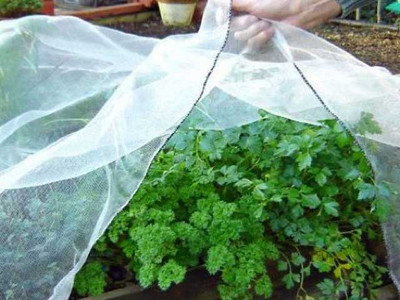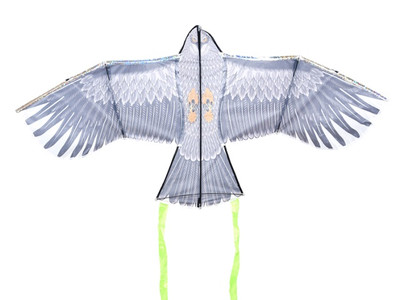Polytunnel Pest Control

When it comes to dealing with garden pests, the enclosed space of the polytunnel can be something of a double-edged sword. On the one hand, your crops are protected from the outdoors - which can make it less likely that they’ll be interfered with by garden insects. On the other hand, the warm (and sometimes humid) climate inside the polytunnel means that when pests do get a foothold the problem can spread very fast. For this reason it’s very important to be vigilant and keep an eye out for any signs of pests or plant damage. Nip it in the bud early and you may well save yourself a lot of hurt!
As with growing in the outdoors, some plants will be more vulnerable to plant damage than others - and some will be more attractive to garden insects than others. For the beginner gardener, learning from experience is all part of the trial and error of gardening. Even the most knowledgeable gardener in the world can be taken by surprise and have a crop decimated despite thinking they’ve done everything to prevent such an occurrence. So don’t get disheartened if you have to deal with some pest problems, particularly in the first couple of years after putting up a polytunnel. Having said all that, you didn’t come here to be told “learn from trial and error, you’re on your own’’, did you? So in the following article we’ll discuss some of the common polytunnel pests, what crops they gravitate towards and what you can do to prevent problems snowballing.
Aphids
A six-letter word that will make many a gardener shudder. There are more than 500 species of aphid in the UK, and some of the most common names gardeners will be familiar with include the greenfly and the blackfly. Aphids favour warm conditions and are mostly a problem in spring and summer in an outdoor garden, but the enclosed warmth of a polytunnel stretches their season out. It’s vital to act quickly when you see signs of an aphid infestation - they multiply fast.
Greenfly are known to attack a wide range of plants, but they’re especially fond of young plants with plenty of new growth. They feed on the plant by sucking sap through their tubular mouths. This process can hurt your crops either by directly introducing a virus or by leaving the plant damaged and vulnerable to disease. The sticky honeydew produced by these aphids can attract ants, who will in turn protect greenfly colonies from predators.
Telltale signs of a greenfly infestation include curled, stunted leaves or areas with no new growth. You can remove small infestations by hand, while larger amounts can be removed with a water spray bottle. If clearing greenfly from a potted plant or container, take it outside the polytunnel first so that the aphids are not spread to other growing areas. Other methods include using beneficial insects such as ladybirds, who feed voraciously on greenfly and lay their eggs among the colony. As a bonus, beneficial insects such as ladybirds and lacewings are also pollinators. A more tactical method of preventing a greenfly infestation is to plant nasturtiums or cosmos in your polytunnel: the scent will attract aphids away from vulnerable crops.
Blackfly are more discerning when it comes to which plants they go after: up to 2mm long, you will often see them surrounding the tips of broad beans or French beans. Blackfly colonies can also sometimes be seen in growing numbers on the underside of plant leaves. These numbers can spread fast and start moving down the stem until they cover the whole plant. Again, the honeydew they spread attracts ants to act as their bodyguards.
How best to deal with blackfly? Check plants frequently, and if you see signs of an infestation it’s best to get rid of the heavily infected plants to stop them spreading. Burn these plants or seal them in plastic. You can also divert the attention of their buddies - the ants - by leaving some syrup or sugary mixture in a separate area of the polytunnel. Removing by hand or with a spray are also effective methods, but make sure that none have been left behind.
Whitefly
A close relation of aphids, whiteflies are winged, soft-bodied white insects who are partial to a wide range of polytunnel crops. In particular they like to go after tomatoes, cucumbers and peppers, sucking large amounts of sap and leaving behind (yes, you guessed it) honeydew. One unique tell-tale sign of a whitefly problem is if you brush past a plant and you see a white specks rising into the air. To investigate further, you should turn leaves over and look for small white insects.
Whiteflies can be removed by hand if the numbers are small enough, but there are also other more creative ways of dealing with them. Planting a row of marigolds near vulnerable crops is a popular preventive measure - and one that we here at Quickcrop use as a pest-repellent in our polytunnel. You can also hang traps such as the Vitax Whitefly Trap, which is non-toxic and pesticide-free. It can also be used to trap greenfly, blackfly and other flying insects or thrips.
Slugs and Snails
They mostly come at night. Mostly. Slugs and snails lurk in hiding places during the day and do their damage when it gets dark - and they can do a lot of damage, sometimes decimating whole rows of crops. They can also scale climbing plants and hide out. Slugs and snails favour damp conditions in your polytunnel. For this reason it can be a good idea to do your irrigation earlier in the day and leave time for the moisture to be absorbed.
There are a few methods of dealing with these persistent and resourceful foes. If you wait until it gets dark and go out to your polytunnel with a torch, you can catch them in the act and remove them by hand (you may well want to use gloves!). Slug pellets are another option: we recommend Growing Success Organic Slug Killer, a safe (when used according to instructions) and biodegradable pest control. They’re a great solution because they swell when damp, which only increases their attractiveness to slugs; and even when they’re not consumed they will add iron and nutrients to the soil as they break down.
Spreading dry organic matter such as crushed eggshells or wood ash near vulnerable plants can also discourage slugs and snails, who don’t like a dry surface. Beer traps are another creative method: place a container half-buried in the soil and pour some beer into it. This will attract slugs or snails, who won’t be able to get back out once they’ve crawled in.
Wireworms
Wireworms - the larvae of the click beetle - can often cause problems in the first couple of polytunnel years, particularly if you’ve set up your polytunnel beds on a recently grassy area. The larvae have a distinctive orange colour and can be about an inch long. They feed on grass roots under normal circumstances, but when grass has been converted to a vegetable garden they can quickly turn their attention to plant roots.
Wireworm problems can be difficult to deal with, and sometimes the best solution is time. It can be a good idea to grow a ‘sacrificial crop’ for the first year or two: potatoes are a common choice as the wireworm will burrow into the tubers and that will keep them occupied. Biological control such as nematodes can also be a way of dealing with heavy infestations.
Caterpillars
Caterpillars are the scourge of the brassica plant. Butterflies and moths - such as the tellingly-named cabbage white butterfly - come in through open doors and gaps and seek out a suitable crop on which to lay their eggs. In turn the hatched caterpillars can destroy a row of brassica plants in a relatively short space of time.
When planting brassica plants (such as kale, broccoli or cabbage), stay vigilant and watch out for rows of eggs on the underside of leaves. Remove them or squash them before they hatch. Try to catch or ‘shoo’ away any butterflies and moths that find their way into your tunnel. Netting material across the doorways - or at least the top part of the doorway - can also prevent their entry. At-risk crops can be covered with plant protection mesh: Enviromesh is ideal for brassica plants, and allows air and water to circulate freely.
Rodents
Rodents will of course be a threat to your polytunnel, whether they’re seeking out a food source or looking for a warm shelter in the colder winter months. They can destroy plant stems or dig up bean seeds and store them in a hidden place.
You absolutely don’t want to be using poisons - which can inadvertently be spread with catastrophic results - and you probably don’t want to be using traps either, unless you want to run the risk of hurting a pet or the neighbours’ cat. In fact, neighbouring cats may well be one of your best repellants. Keep your polytunnel free of clutter or dense foliage. Encouraging wildlife or natural predators to your garden is another method of pest control: an owl nestbox can be a very useful addition, especially when you consider that an owl can eat 12 mice in one night.
Birds
Birds around the polytunnel can be both a blessing and a curse. They can ‘take care of’ troublesome pests, but they can also get peckish for some of your crops - such as ripe grapes or tomatoes. Searching for wormfood can also cause them to trample and disturb soil or mulch.
Hanging netting across the doorways is one preventive measure. If you’d like to get more creative you could hang a scarecrow-of-sorts from one of the bars inside the polytunnel or place one just outside the main entrance.



